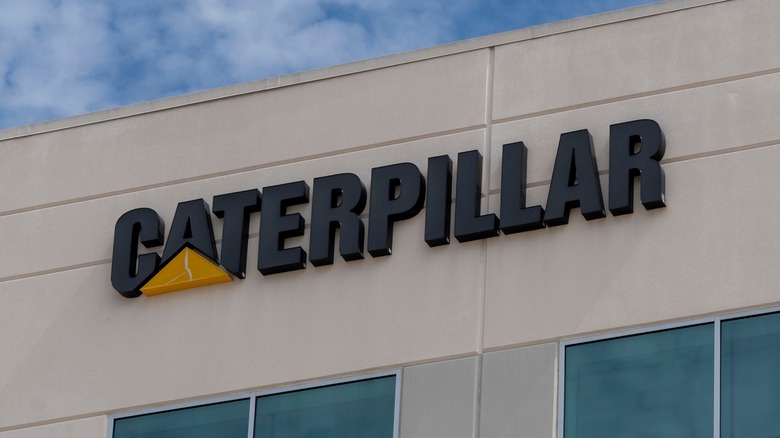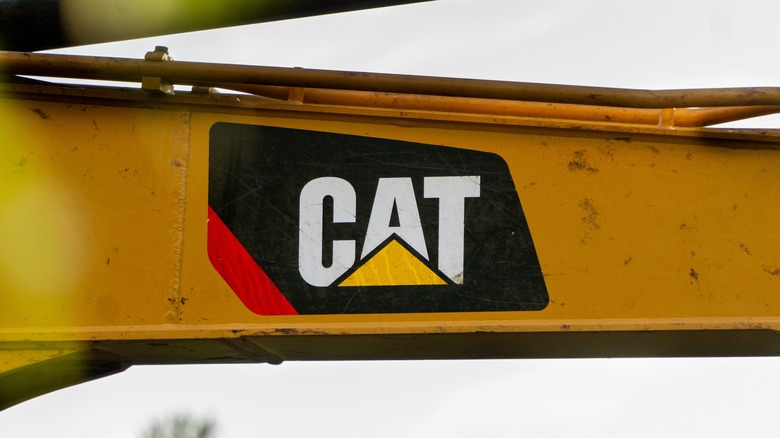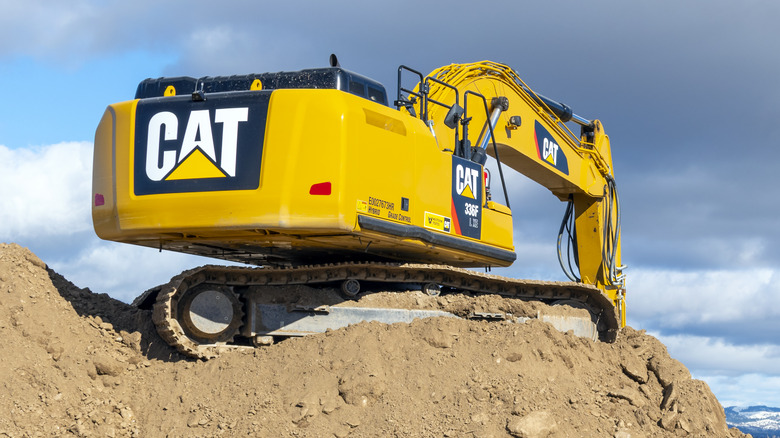What Really Goes On Inside Caterpillar's 'Proving Grounds'
If you've worked on a construction site or spent any time around one, chances are you've seen machinery from Caterpillar — the brand attributed to a fake 2025 truck floating around the Internet — in action. Since 1925, the company has provided construction workers, farmers, and even Allied armed forces with its tractors during World War I with the tools needed to get all kinds of jobs done. This longevity isn't a fluke, either. The minds behind Caterpillar have remained committed to pushing it and its products forward. This is perhaps no better exemplified than by the famed yet secretive Caterpillar Peoria Proving Grounds, located in Washington, Illinois.
Caterpillar's 2,500-acre Proving Grounds has acted as a place for its technology to be put to the test, studied, tweaked, and more for over 75 years. It simulates real-world construction situations with test tracks, steep climbs, simulated mines, and, perhaps most prominently, the Machine Development Center.
This is a 150,000-square-foot indoor testing area with 3.4 acres of dirt where Caterpillar equipment can perform load and dump cycles. It also includes around 50 feet of dirt to simulate excavation efforts. There are other indoor portions, including a 50,000 square-foot repair shop, an industrial-grade carwash, a large acoustics room for testing machinery sound levels. As the company works to make its machinery faster, more durable, and more efficient, those at the Peoria Proving Grounds are using modern technology to make them far easier to use as well.
How the Peoria Proving Grounds is bringing Wi-Fi to jobsites
Running large industrial machinery is not a simple task, especially when manpower is limited on the job site. This can involve a lot of switching from machine to machine, leading to strain on one's body and a lot of wasted time. Aware of these issues, Caterpillar has put in the work on a game-changing solution at its Peoria Proving Grounds. Speaking with Central Illinois Proud, Charlie Menke, director of machine development at Caterpillar, explained that Wi-Fi has been the key to making machine testing and operation safer and easier. "This takes them out of the machines and out of harm's way," he began.
"Our system basically runs off of Wi-Fi. We can run machines all around the world with a secure network... So that operator can, in five minutes, switch between five different machines if he wants to," he said, noting that an office employee can now easily run machines from a distance in the remote operator station, avoiding physical strain and the elements. While rigorous machine testing and experimentation with Wi-Fi on job sites has occupied those on the Peoria Proving Grounds, others under the Caterpillar umbrella have made great technological strides at a second location.
Caterpillar's second Proving Grounds is all about thinking green
Though there's a lot of great work being done at Caterpillar's Peoria Proving Grounds location, it can't do everything. So, to keep the testing and fresh ideas flowing, another Proving Grounds location opened in 1990 around Tucson in Green Valley, Arizona. At face value, this 6,500-acre site operates similarly to its historic counterpart. It oversees the creation, development, and testing of new construction equipment and technology. Digging deeper reveals that the main focus of the Tucson Proving Grounds is to provide cleaner, more environmentally-conscious Caterpillar products to the world.
In addition to testing out electric machinery like trucks, the Tucson site specializes in microgrids: Small-scale grids that collect solar and wind energy and store them for future use on mining sites. The proving ground is actively testing these microgrids, in addition to exploring hydrogen production and use as a fuel source. The Tucson Proving Grounds has also been working to diminish its reliance on diesel since 2016, taking a hybrid approach with a solar-diesel microgrid.
In both Illinois and Arizona, the folks at Caterpillar have their sights set firmly on the future. It'll be interesting to see what else emerges from the two Proving Grounds in the coming years.


